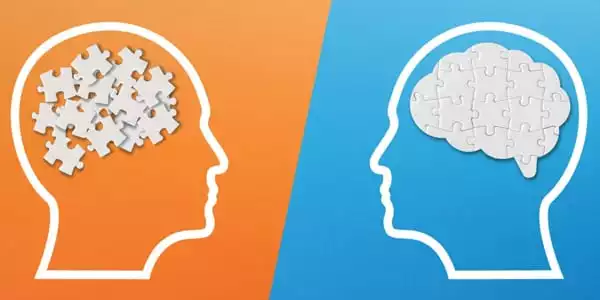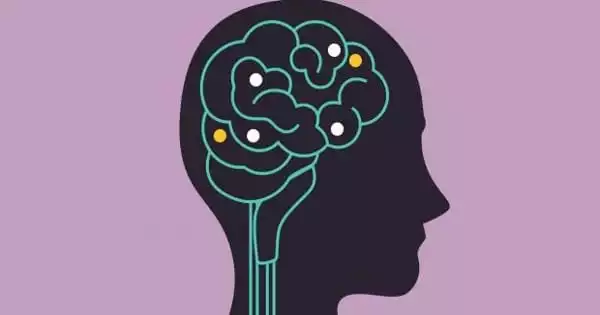When a memory is formed, information flows from the cortex, the portion of the brain with the most nerve cells, to the hippocampus, the brain’s major switching point for memories. When we retrieve a memory, information flows in the opposite direction.
Researchers have discovered two types of cells in human brains that play a role in arranging separate memories based on when they occurred. This discovery advances our understanding of how the human brain develops memories and has implications for memory diseases such as Alzheimer’s disease. The research was funded by the National Institutes of Health’s Brain Research Through Advancing Innovative Neurotechnologies (BRAIN) Initiative and published in the journal Nature Neuroscience.
“This work is groundbreaking in terms of how the researchers explored how the human brain thinks,” said Jim Gnadt, Ph.D., program director at the National Institute of Neurological Disorders and Stroke and the NIH BRAIN Initiative. “It applies to human neuroscience an approach previously utilized in non-human primates and rodents, recording directly from neurons that generate thoughts.”
This research, directed by Ueli Rutishauser, Ph.D., professor of neurosurgery, neurology, and biomedical sciences at Cedars-Sinai Medical Center in Los Angeles, began with a seemingly basic question: how does our brain collect and organize memories? We live our awake lives as a continuous experience, yet human behavior studies suggest that we remember these life events as discrete, distinct moments. What distinguishes the beginning and conclusion of a memory? This notion is known as “event segmentation,” and we know very little about how it works in the human brain.
A boundary response is analogous to establishing a new picture event. It’s as though additional photographs are being added to that moment as you develop the recollection. When a hard border is crossed, the event ends and a new one begins. Soft boundaries can be thought of as new images formed within the context of a single occurrence.
Dr. Rutishauser
Rutishauser and his colleagues conducted this research on 20 patients who were having intracranial recording of brain activity to guide surgery for the treatment of drug-resistant epilepsy. They studied how patients’ brain activity changed when they were shown film clips with various types of “cognitive borders” — transitions thought to induce changes in how a memory is stored and that mark the beginning and end of memory “files” in the brain.
The first form, known as a “soft boundary,” is a video that begins with one scene and then cuts to another scene that continues the same tale. For example, in a baseball game, as the hitter smacks the ball, the camera switches to a shot of the fielder making a play. A “hard boundary,” on the other hand, is a transition to a completely other story — imagine if the batted ball was instantly followed by a cut to a commercial.
The key distinction between the two borders was revealed by Jie Zheng, Ph.D., a postdoctoral fellow at Children’s Hospital Boston and the study’s first author. “Is this a fresh scene in the same story, or are we viewing something entirely different? The type of cognitive limit is determined by how much the narrative varies from one clip to the next” Zheng stated.

The researchers measured the brain activity of individuals while they watched the movies, and they discovered two unique sets of cells that increased their activity in response to different sorts of boundaries. One type of cell, known as “border cells,” became more active in response to a soft or firm barrier. A second set, known as “event cells,” only responded to strict boundaries. This led to the hypothesis that the formation of a new memory occurs when the activity of both border and event cells peaks, which only happens after a hard boundary.
How images are stored on your phone or computer is one analogue for how memories may be stored and accessible in the brain. Photos are frequently automatically categorized into events depending on when and where they were taken, and then displayed to you as a significant photo from that event. You can drill down into that precise event by tapping or clicking on the photo.
“A boundary response is analogous to establishing a new picture event,” Dr. Rutishauser explained. “It’s as though additional photographs are being added to that moment as you develop the recollection. When a hard border is crossed, the event ends and a new one begins. Soft boundaries can be thought of as new images formed within the context of a single occurrence.”
The researchers then investigated memory retrieval and how it links to the firing of boundary and event cells. They hypothesized that the brain used border peaks as markers for “skimming” over previous memories, similar to how key photographs are used to identify events. When the brain recognizes a familiar firing pattern, it “opens” that event.
Two separate memory tests were utilized to investigate this notion. In the first experiment, participants were shown a sequence of still photos and asked if they were from a scene in the film clips they had just seen. Participants in the study were more likely to recall images that occurred shortly after a firm or soft boundary, indicating the creation of a new “photo” or “event.”
The second test consisted of displaying them pairs of images from film segments they had just watched. After that, the participants were asked which of the two images had emerged first. They had a far more difficult time selecting the correct image if the two occurred on opposite sides of a hard boundary, probably because they were placed in different “events.”
These discoveries shed light on how the human brain produces, stores, and retrieves memories. Because event segmentation is a process that can be disrupted in patients with memory impairments, these findings could be used to design new therapies.
Dr. Rutishauser and his colleagues intend to investigate two potential pathways for developing medicines based on these findings in the future. First, neurons that employ the chemical dopamine, which is best known for its function in reward mechanisms, may be activated by border and event cells, implying a viable target to aid in memory formation.
Second, theta rhythm, one of the brain’s typical intrinsic rhythms, has been linked to learning and memory. Participants had an easier difficulty recalling the order of the images they were presented if event cells fired in time with that rhythm. Because deep brain stimulation can influence theta rhythms, it could be used to treat people with specific memory issues.
















